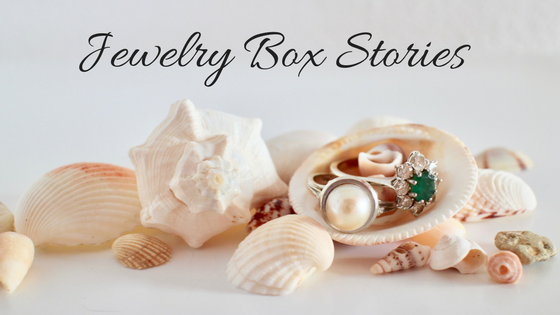Day 23, 731: My Crowning Jewels.
Today, after searching for the perfect ring jacket for 35 years, I walked into a local jeweler and ordered one made. The cost was not insignificant, but not exorbitant either. Still a luxury, I could afford it. Still a luxury, I almost hesitated.
I had done enough research to know it was not overpriced, and had waited long enough that if not now, when. It was time to reach out and grab the literal gold ring.
I’m generally good at spending on myself, but at some level of expense I pause. That’s not a bad thing, but also not a virtue. It’s important to deem yourself worthy and afford things for yourself rather than wait for others to bestow them you. Jewelry is one of those things.
For some reason, we have a thought that jewelry is bestowed upon us by a loved one whether it be an engagement ring or a macaroni necklace. As women have gained better economic power, that tale is starting to change. According to ForeverMark, a De Beers group diamond brand, “financially independent women are proving a game-changer.”
A friend of mine was one of the first women on Wall Street and made money that was inconceivable to the rest of us. At bonus time, she deposited money in all sorts of accounts, but then invested (she called it that) in also buying herself two stunning ruby rings. This kind of financial power allows women to become self-coronated Queens. They don’t wait to have jewels bestowed on them based on an obligation to a political state or another person.
Personal Treasures
I bought my first gold necklace for myself when I was in my twenties. I still have it and wear it with pride. A beau at the time tried to buy it for me, but I knew that would taint the purchase. He was not a good person, and the relationship wasn’t going to last. I wanted to enjoy the necklace, had walked into the jewelry store with the intent to purchase, and walked out with something that was truly mine with no strings attached.
At the same time, the beau bought me a gold charm for a necklace. I gave it away years ago. It had no sentimental value.
The first woman I ever knew who purchased her own jewels was my mother. Throughout my childhood she wore marcasite rings and pins. Jewelry was an expensive indulgence during a time when my immigrant family was just trying to get by. Marcasites, also called Fool’s Gold, had the sparkle of diamonds, but were affordable. Today, whenever I see marcasite jewelry I think of my mother. It’s was her then jewel of choice.
Years later, after my father had long passed away and my mother had funds of her own from smart investments, she started to buy herself different jewels. She enjoyed every piece. None of it was marcasite. All of it was gold, or pearls, with a few gems occasionally interspersed.
The Crown and The Colony
Several years ago, I had the opportunity to visit The Crown Jewels in the Tower of London. It’s a collection of 140 ceremonial objects used in coronations and other state events involving the monarchy. Most items are overly ornate, seem very heavy, and when shown adorned by various Queens in various pictures, never seem to bring the bearer joy. They jewels are held behind glass by curators, and none seem cherished by their owners.
In contrast, many first world women today have jewels that are truly treasured from wedding and engagement rings to necklaces and other baubles handed down, purchased for special occasions, or given in commemoration of milestone events. By ancient standards, most of us might be considered as wealthy as queens of old, and likely more adorned with valuable gems on a daily basis.
India, once considered a colony of the UK, has the largest inventory of personal gold in the world. Most of the country’s gold is in the form of jewelry worn by even some of the country’s poorest women. It is considered a personal bank account, or hedge against economic downturns.
The Original Hedge Fund
And there you have it. Jewels were the original hedge fund. In eras when women didn’t have means of their own, jewels were items of tangible value that could be used if dire times descended. Instead of bank accounts, women had fingers and toes to hold adornments.
Just like the marcasites of my mother’s era, today there are cubic zirconia gems and Kenya diamonds along with full assortments of costume jewelry. Kenya diamonds were named by a Philadelphia jeweler who coined the phrase “Can ya tell the difference?” Even if you can’t, you know the difference.
The jeweler today asked me if I wanted real or Kenya diamonds. My answer was simple. I wanted real. This was a real woman’s investment … in myself.
###
Daily Focus on Gun Sanity: According to one source from 2014, the average price of a handgun varies from $600-$1,000 when they are legitimately purchased. Someone in the market for a firearm likely doesn’t flinch at the price. But what’s the true price of a firearm? According to the Giffords Center to Prevent Gun Violence, “Researchers conservatively estimate that gun violence costs the American economy at least $229 billion every year, including $8.6 billion in direct expenses such as for emergency and medical care.”


